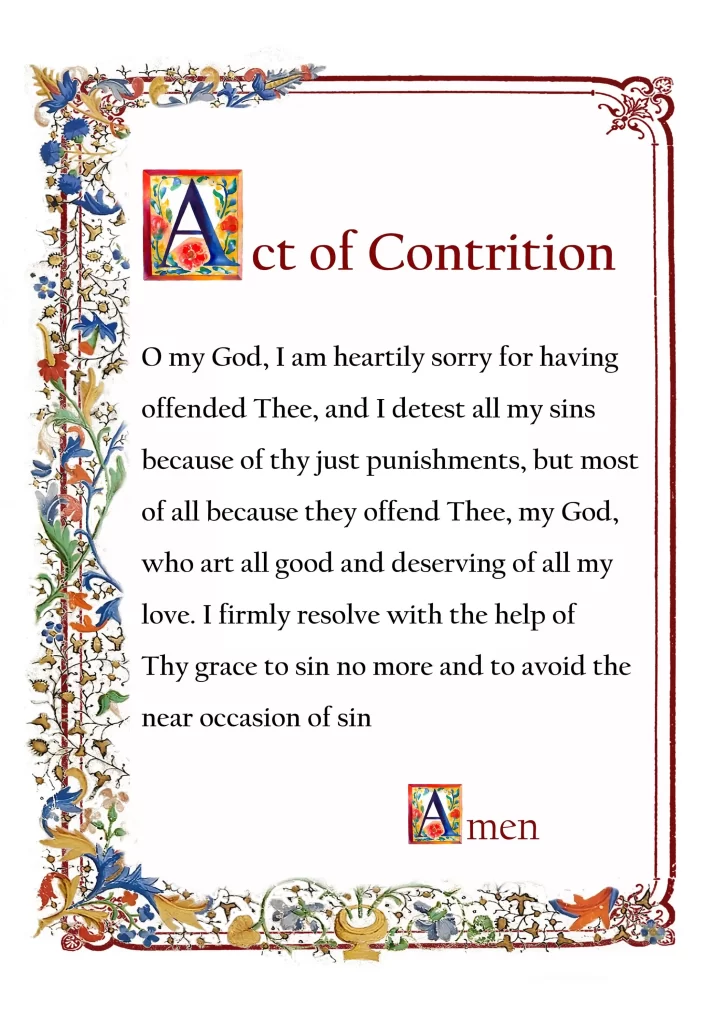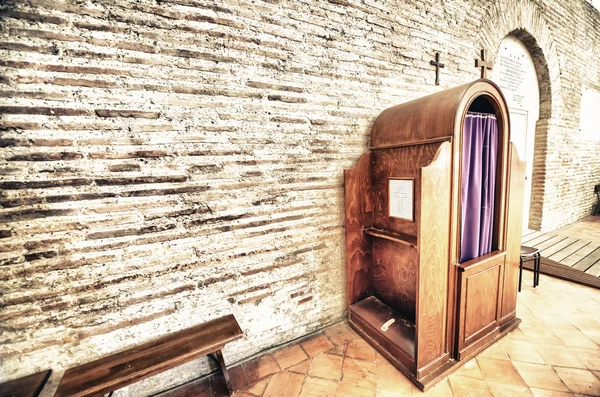Confession is one of the most healing sacraments in the Catholic Church—a direct encounter with God’s mercy. For those returning after a long absence or approaching for the first time, the process may seem unfamiliar or even intimidating. But at its heart, confession is not about punishment or shame; it’s about renewal, freedom, and grace. Understanding each step of this sacred tradition helps remove anxiety and deepens its spiritual meaning. This guide will walk you through the entire process of confession, from preparation to penance, offering clarity and encouragement along the way.
Table of Contents
1. Understanding the Purpose of Confession
The sacrament of confession, also known as reconciliation or penance, is a vital practice for Catholics seeking forgiveness and spiritual growth. It restores one’s relationship with God and the Church, healing the soul through divine mercy. Confession acknowledges human weakness and provides a path back to grace through sincere repentance.
More than just a ritual, confession is a deeply personal moment of transformation. Catholics believe it is Christ Himself, through the priest, who offers absolution. This belief gives profound meaning to the act and affirms the Church’s role in guiding the faithful back to spiritual wholeness. Confession is both humbling and liberating.
2. Examination of Conscience
Before entering the confessional, Catholics are encouraged to reflect on their lives and actions since their last confession. This step is called an examination of conscience and is rooted in the Ten Commandments, the Beatitudes, and other teachings of Jesus. It helps identify sins, both in action and omission.
Resources such as prayer cards, booklets, or mobile apps can guide this process. Taking time in quiet prayer allows the individual to recognize patterns of sin, areas of growth, and moments where God’s presence may have been ignored. Honest reflection fosters true contrition and readiness for confession.
3. Contrition: Feeling True Sorrow for Sin
Contrition is the heartfelt sorrow for offending God and the desire to sin no more. It’s not merely regret or guilt but a spiritual sadness that comes from recognizing the damage sin causes in one’s relationship with God and others. Perfect contrition arises from love; imperfect contrition comes from fear of punishment.
Both forms are valid when paired with confession. The Catechism of the Catholic Church emphasizes the importance of sincere repentance. Prayers such as the Act of Contrition are often recited during this phase to express sorrow and a firm purpose of amendment. True contrition is the soul’s opening to God’s mercy.
4. Finding a Confessor or Reconciliation Time
Confession is typically offered at set times in parishes, though many priests also make themselves available by appointment. Finding a priest you trust can make the experience more fruitful. There’s no requirement to confess to the same priest each time, but consistency may build spiritual support.
Many churches list their reconciliation schedule on their websites or bulletins. Some offer confession during Eucharistic adoration or before weekend Masses. Seeking out this sacrament is a step of courage and faith. Remember, priests are bound by the Seal of Confession and cannot reveal anything shared in the sacrament.

5. Entering the Confessional
Upon entering the confessional, you can choose to speak face-to-face with the priest or remain anonymous behind a screen. Begin by making the Sign of the Cross and greeting the priest. Traditionally, the penitent begins with, “Bless me, Father, for I have sinned. It has been [time] since my last confession.”
This introduction sets the stage for the sacrament and helps orient both priest and penitent. The confessional is a sacred space where honesty is honored, and judgment is replaced by compassion. The atmosphere is meant to be one of peace, trust, and the presence of God’s grace.
6. Confessing Your Sins
This is the core of the sacrament—speaking your sins aloud to the priest. Catholics are expected to confess all mortal sins in kind and number to the best of their ability. Venial sins may also be confessed, though they are forgiven through other means as well, such as prayer or communion.
Avoid unnecessary details but be honest and sincere. The priest may ask clarifying questions to better understand the situation. This is not to judge but to offer meaningful guidance. Speaking your sins aloud breaks their power and opens the heart to healing. It is an act of vulnerability and strength.
7. Receiving Counsel and Penance
After hearing your confession, the priest will offer spiritual guidance tailored to your life and struggles. This may include advice, encouragement, or reminders of God’s love and forgiveness. Then, he will assign a penance—an act of prayer, charity, or sacrifice meant to express your desire to make amends.
Penance helps reorient your heart and repair relationships. It’s not a punishment, but a grace-filled opportunity to realign your soul with God’s will. Completing it with sincerity strengthens your spiritual life. The penance assigned is usually simple but deeply symbolic of the desire to change and grow in holiness.

8. The Act of Contrition
Before receiving absolution, the penitent recites an Act of Contrition—a prayer expressing sorrow and a firm purpose to avoid sin in the future. There are several versions, but the core message is the same: heartfelt remorse and a plea for God’s mercy and help to do better.
You may bring a printed prayer, read it from your phone, or recite one from memory. If unsure, the priest can assist or provide a version to say. This prayer seals your internal repentance with a spoken vow, preparing the soul to receive the grace of absolution.
9. Absolution: The Moment of Forgiveness
The priest then stretches his hand over the penitent and prays the words of absolution, formally forgiving the sins through the authority of Christ. This is the moment when grace is poured out, and the soul is cleansed. Catholics believe this restores their union with God and the Church.
Hearing the words, “I absolve you from your sins…” brings peace and relief. It is a spiritual rebirth. The penitent makes the Sign of the Cross and responds, “Amen.” This concludes the sacramental part of the confession, but the journey of renewal continues with the living out of penance and grace.
10. Leaving the Confessional and Living Renewed
After confession, Catholics are encouraged to complete their penance as soon as possible. This might mean saying prayers, doing an act of kindness, or reflecting in silence. The feeling afterward is often described as lightness, joy, or peace—because sin has been lifted and grace has returned.
Regular confession, such as once a month, is recommended for spiritual health. It strengthens humility, sharpens conscience, and deepens faith. Living renewed also means striving to avoid sin, practicing virtue, and leaning on God’s grace. The sacrament equips believers to face life with clarity, compassion, and courage.

11. A Sacred Practice of Peace and Grace
Confession is more than a spiritual checklist—it is a personal encounter with the mercy of God. Each step, from examination to absolution, invites the soul into healing and freedom. Through this sacrament, Catholics find peace, restore broken relationships, and grow in holiness.
Whether it has been a week or many years, it is never too late to return to confession. The Church welcomes all with open arms and a heart full of mercy. If you’re seeking restoration, peace, or clarity, this sacrament offers a path. Let this be the beginning of your renewal.
12. Embracing Confession with Faith and Courage
Every confession is a homecoming—a return to the Father’s love. Don’t let fear or shame keep you away. The Church exists to guide, not to condemn. The priest is there to represent Christ’s compassion, not human judgment. Confession is a gift waiting to be opened.
If you’re in need of grace or burdened by guilt, take the step. The process is simple, and the reward is eternal. Remember, healing begins with honesty, and joy begins with forgiveness. Let this sacrament refresh your spirit, renew your soul, and deepen your walk with God.
How useful was this post?
Click on a star to rate it!
Average rating / 5. Vote count:
No votes so far! Be the first to rate this post.
Author
-
Meet Dr. Kendall Gregory, a highly accomplished professional with a remarkable academic background and a deep passion for empowering individuals through knowledge. Dr. Gregory’s educational journey began with a Bachelor of Science degree, followed by a Doctor of Chiropractic Medicine, focusing on diagnosing and treating musculoskeletal conditions. He further expanded his expertise with a Master's degree in Oriental Medicine, specializing in acupuncture and Chinese herbology, and a Master's degree in Health Care Administration, emphasizing his dedication to improving healthcare systems. Dr. Gregory combines his extensive knowledge and practical experience to provide comprehensive and integrative healthcare solutions. Through his writings, he aims to inspire individuals to take charge of their health and make informed decisions.
View all posts







